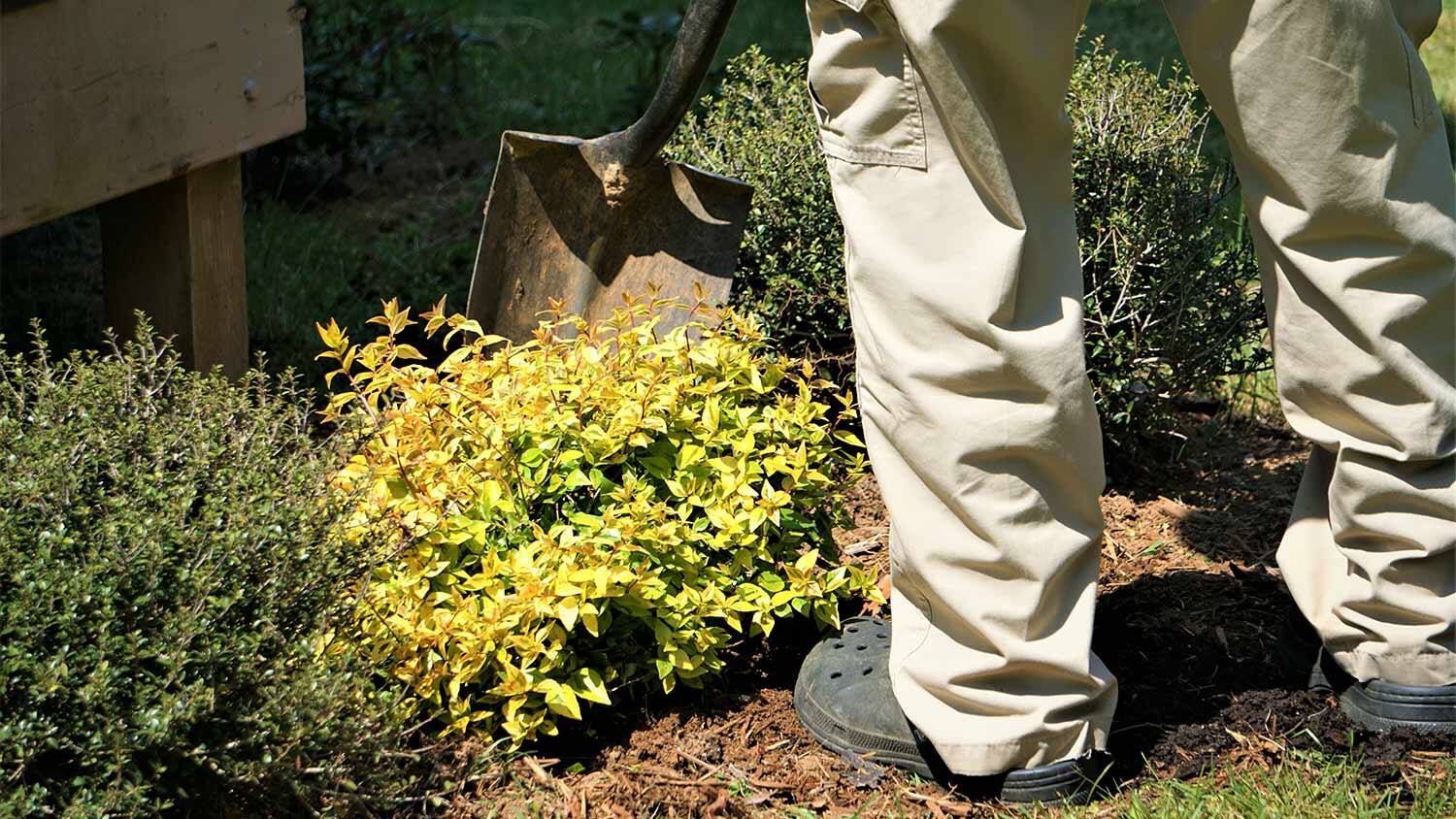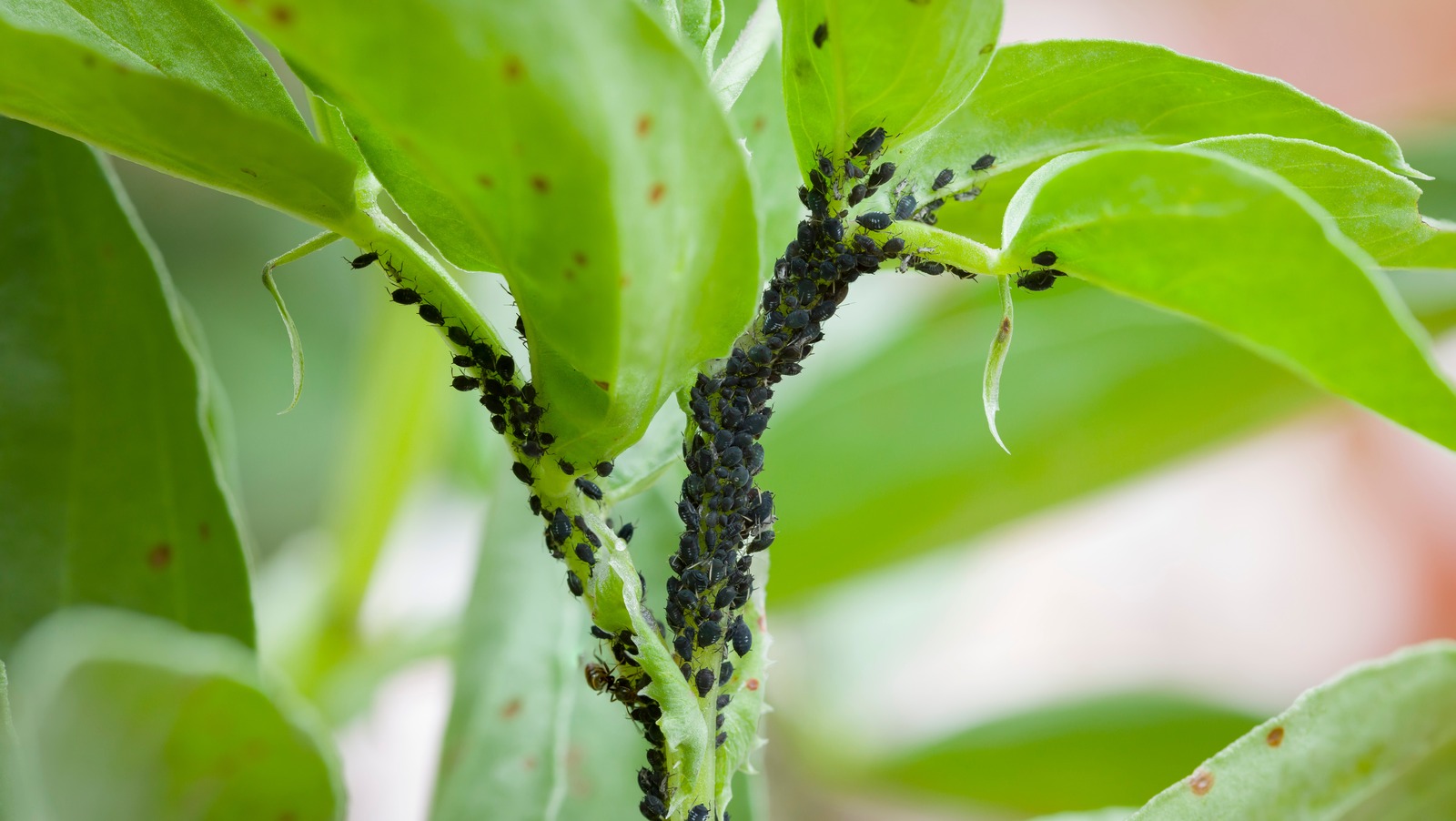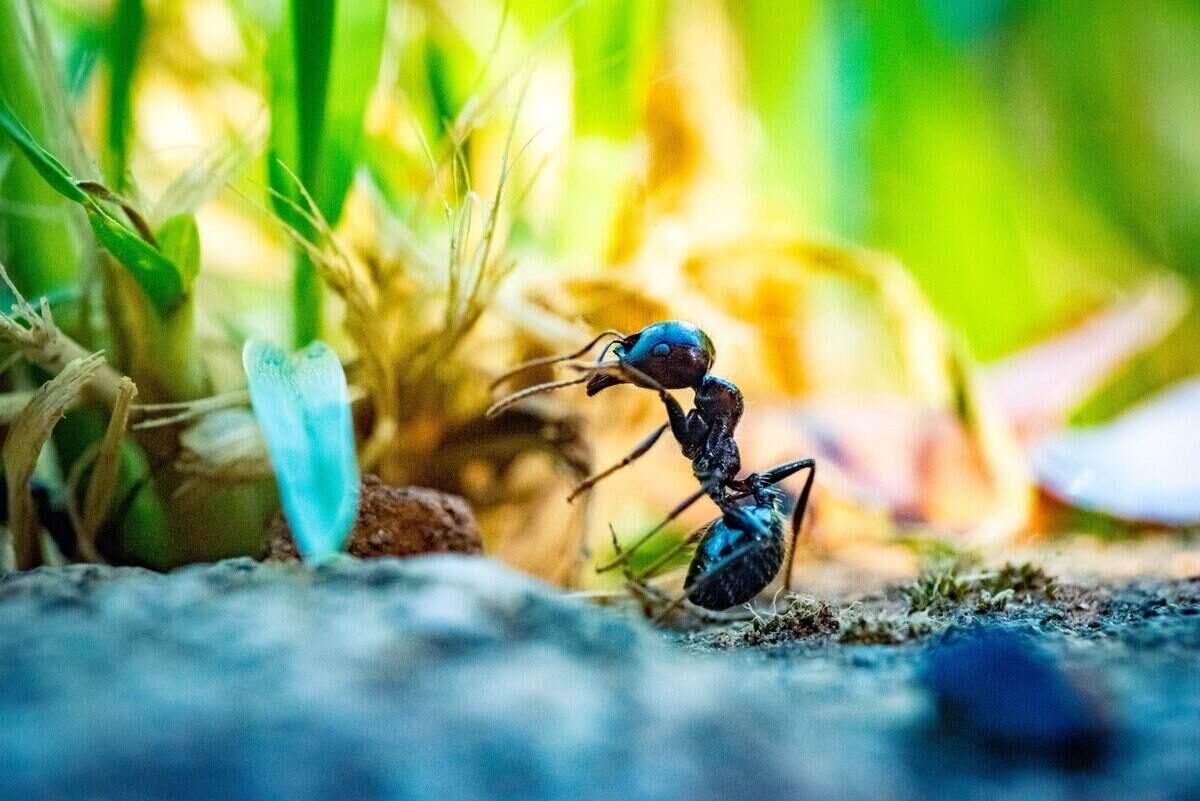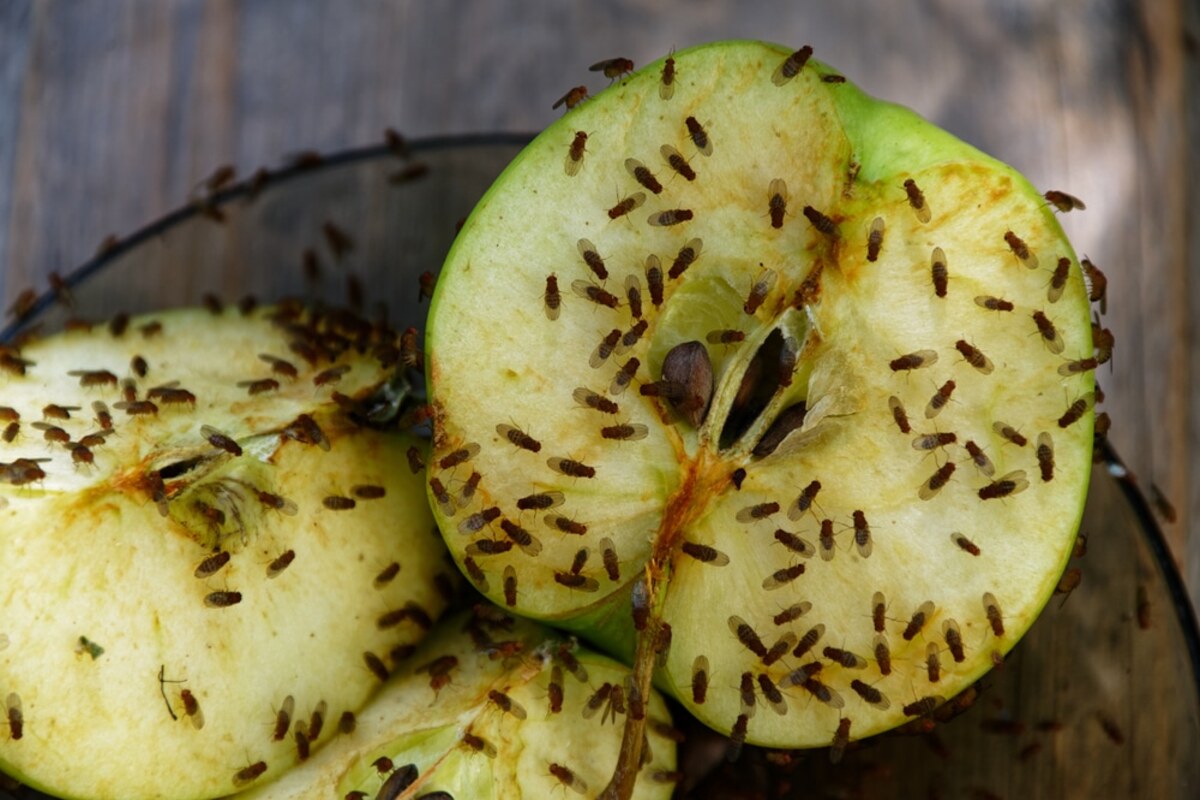Home>Gardening Tips and Tricks>Problem Solving>How To Get Rid Of Mold On Plant Soil


Problem Solving
How To Get Rid Of Mold On Plant Soil
Modified: February 9, 2024
Solve the problem of mold on your plant soil with our effective tips and techniques. Get rid of mold and keep your plants healthy with our expert advice.
(Many of the links in this article redirect to a specific reviewed product. Your purchase of these products through affiliate links helps to generate commission for Chicagolandgardening.com, at no extra cost. Learn more)
Table of Contents
- Introduction
- Understanding Mold on Plant Soil
- Causes of Mold on Plant Soil
- Signs of Mold on Plant Soil
- Potential Risks of Mold on Plant Soil
- Prevention Measures for Mold on Plant Soil
- Removing Mold from Plant Soil
- Natural Remedies for Mold on Plant Soil
- Chemical Solutions for Mold on Plant Soil
- Maintaining a Mold-Free Environment for Plant Soil
- Conclusion
Introduction
Welcome to our guide on how to get rid of mold on plant soil. If you are an avid gardener or plant enthusiast, you know that maintaining healthy soil is crucial for the well-being of your plants. Unfortunately, mold growth on plant soil is a common issue that many gardeners face. It not only looks unsightly but can also hinder the growth and health of your plants.
Mold thrives in moist and dark environments, making plant soil an ideal breeding ground. It can be caused by various factors, such as overwatering, poor drainage, lack of airflow, or even contaminated potting soil. If left untreated, mold on plant soil can harm the roots and lead to plant diseases.
In this comprehensive guide, we will delve into the causes of mold on plant soil, the signs to look out for, and the potential risks it poses. We will also provide you with effective prevention measures, as well as natural and chemical solutions to remove mold from your plant soil. Lastly, we will discuss how to maintain a mold-free environment for your plants to thrive.
By the end of this guide, you will have the knowledge and tools necessary to tackle mold on plant soil and ensure the health and vitality of your beloved plants. So, let’s dive in and learn how to banish mold from your plant soil once and for all!
Understanding Mold on Plant Soil
Mold on plant soil refers to the growth of fungal organisms that thrive in damp and dark environments. It is commonly seen as a fuzzy or powdery layer on the surface of the soil or even on the plant itself. While mold may not directly harm the plant, it can lead to various issues if left unaddressed.
Molds are types of fungi that reproduce by producing spores. These spores can easily travel through the air and settle on the soil, where they find the ideal conditions to grow and multiply. The most common types of mold found on plant soil include white mold, green mold, and black mold.
The presence of mold on plant soil is often an indication of excess moisture. Overwatering or inadequate drainage can create a perfect habitat for mold to thrive. When the soil remains consistently wet, it becomes a breeding ground for mold spores to germinate and spread.
Furthermore, poor airflow around the plants can contribute to the development of mold. Lack of ventilation allows humidity levels to rise, creating a favorable environment for mold growth. Additionally, using contaminated potting soil or introducing infected plants to your garden can introduce mold spores into the soil, leading to the colonization of mold.
It is important to note that not all molds are harmful to plants. Some molds, such as certain species of beneficial fungi, can actually promote plant growth and improve soil health. However, the presence of mold on plant soil can indicate imbalances and potential problems that need to be addressed to prevent any negative impact on the plants.
By understanding the causes and signs of mold on plant soil, you can take proactive measures to prevent its growth and ensure the well-being of your plants. In the following sections, we will explore the various causes of mold on plant soil and discuss the associated risks. Stay tuned!
Causes of Mold on Plant Soil
Mold growth on plant soil can be attributed to several factors, all of which create the ideal conditions for mold to thrive. Understanding these causes will help you identify and address the underlying issues to prevent mold from taking hold in your garden. Here are some common causes of mold on plant soil:
- Excess Moisture: One of the primary causes of mold growth on plant soil is excessive moisture. Overwatering your plants or having poor drainage in your pots can create a damp environment that is perfect for mold to develop. When the soil stays consistently wet, it provides the necessary conditions for mold spores to germinate and spread.
- Lack of Airflow: Insufficient airflow around the plants can contribute to the development of mold on soil. Stagnant air traps moisture, leading to higher humidity levels, which in turn encourages mold growth. It is important to provide adequate ventilation by ensuring proper spacing between plants and using fans or opening windows in indoor gardening environments.
- Contaminated Potting Soil: Sometimes, the potting soil itself may be contaminated with mold spores. Using low-quality or improperly stored potting soil can introduce mold into your garden. It is important to inspect the soil before using it and opt for high-quality, sterilized potting mix to minimize the risk of mold infestation.
- Infected Plants: Bringing in infected plants or using diseased plant materials can introduce mold spores to your garden. It is essential to quarantine new plants for signs of mold or other diseases before integrating them into your garden. Additionally, regularly trim and remove any infected plant material to prevent the spread of mold.
- High Humidity: Mold thrives in high humidity environments. If your garden or indoor growing space has consistently high humidity levels, it creates a conducive atmosphere for mold growth. Monitoring and controlling the humidity levels by using dehumidifiers or improving airflow can help prevent mold on plant soil.
Identifying the specific cause of mold growth on plant soil is critical to implementing effective prevention measures. By addressing these underlying causes, you can create an environment that is less favorable for mold growth and ensure the health and longevity of your plants. In the next section, we will explore the signs that indicate the presence of mold on plant soil. Stay tuned!
Signs of Mold on Plant Soil
Identifying the signs of mold on plant soil is crucial for taking prompt action to prevent further mold growth and protect the health of your plants. Here are some common signs that indicate the presence of mold on plant soil:
- Fuzzy or Powdery Growth: The most conspicuous indicator of mold on plant soil is the appearance of a fuzzy or powdery growth on the surface. This growth may be white, green, black, or even yellowish in color, depending on the mold species.
- Unpleasant Odor: Mold is often accompanied by a musty or earthy smell. If you notice an unpleasant odor coming from your plant soil, it may be an indication of mold growth. Be sure to differentiate this odor from the natural earthy scent of healthy soil.
- Discolored Soil Surface: Mold-infested soil may appear discolored or have patches of darker or lighter shades compared to the surrounding soil. These discolorations are often a result of fungal activity and the presence of mold spores.
- Inhibited Plant Growth: Mold can have a negative impact on plant health and growth. If you notice stunted growth, wilting, or yellowing leaves, it could be a sign of mold affecting the root system. Mold-infected plants may also show signs of weakened immune systems, making them more susceptible to other diseases.
- White Webbing: In some cases, certain types of mold can produce white webbing on the soil surface or around the base of the plant. This webbing is a result of mold colonies spreading and can be a clear indicator of mold presence.
It is important to regularly inspect your plants and their soil for these signs of mold growth. Early detection allows for prompt intervention and prevents the mold from spreading further. If you notice any of these signs on your plant soil, it is crucial to take action to address the mold issue. In the next section, we will discuss the potential risks associated with mold on plant soil. Stay tuned!
Potential Risks of Mold on Plant Soil
Mold growth on plant soil can pose several risks to the health and well-being of your plants. While not all molds are harmful, it is important to address mold issues promptly to prevent any negative effects. Here are some potential risks associated with mold on plant soil:
- Root Health and Function: Mold can negatively impact the health and function of plant roots. Excessive mold growth can suffocate the roots and hinder their ability to absorb water and nutrients effectively. This can lead to stunted growth, weakened plants, and even plant death.
- Disease Development: Mold on plant soil creates a favorable environment for the development of other plant diseases. The presence of mold weakens the plants’ immune system, making them more susceptible to pathogens and infections. This increases the risk of diseases such as root rot, damping-off, and other fungal infections.
- Decomposition of Organic Matter: Certain types of mold can contribute to the decomposition of organic matter in the soil, including plant debris and organic fertilizers. This can affect the nutrient balance in the soil and impede the availability of essential nutrients for plant growth.
- Air Quality: Mold releases spores into the air, and continuous exposure to these spores can have negative effects on air quality. Mold spores can cause respiratory issues, especially for individuals with allergies or asthma. It is important to minimize mold growth to maintain good air quality in your growing space.
- Aesthetic Appearance: Mold growth on plant soil can be aesthetically unappealing. The fuzzy or powdery growth can make your planters look unkempt, and the discoloration of the soil surface can be unsightly. Keeping your plant soil mold-free not only promotes plant health but also enhances the visual appeal of your garden.
It is important to note that the severity of these risks may vary depending on the type of mold and the susceptibility of your plant species. However, taking proactive measures to prevent and eliminate mold on plant soil is essential for maintaining healthy and thriving plants. In the following sections, we will explore effective prevention measures and methods to remove mold from plant soil. Stay tuned!
Prevention Measures for Mold on Plant Soil
Preventing mold growth on plant soil is the key to maintaining a healthy and thriving garden. By implementing these effective prevention measures, you can create an environment that is less conducive to mold development. Here are some essential steps you can take to prevent mold on plant soil:
- Proper Watering: Avoid overwatering your plants, as excessive moisture is a primary cause of mold growth. Make sure to water your plants only when the top inch of soil feels dry. Use a well-draining potting mix and ensure that your containers have sufficient drainage holes.
- Adequate Airflow: Provide adequate airflow around your plants by spacing them properly and avoiding overcrowding. Good air circulation helps prevent excessive moisture buildup and reduces the risk of mold growth. If you are growing plants indoors, use fans or open windows to promote air movement.
- Inspect New Plants: Before introducing new plants to your garden, inspect them for any signs of mold or other diseases. Isolating new plants for a few days allows you to closely monitor them and ensure that they are not carrying any mold or fungal infections that can spread to other plants.
- Cleanliness: Maintaining cleanliness in your garden is crucial to prevent mold growth. Remove fallen leaves, decaying plant material, and any debris from the soil surface regularly. This eliminates potential food sources for mold and reduces the chance of spores finding a suitable environment to grow.
- Proper Sterilization: If you are reusing pots or containers, make sure to clean and sterilize them thoroughly before planting new plants. This eliminates any remaining mold spores or pathogens that may be present, reducing the risk of mold contamination in your soil.
- Good Soil Drainage: Ensure that your plant containers have proper drainage holes to prevent water from accumulating in the soil. Using a well-draining potting mix enriched with perlite or vermiculite can also help improve drainage and prevent waterlogged soil.
- Monitor Humidity Levels: Regularly monitor and control the humidity levels in your growing environment. Keep relative humidity below 50% to discourage mold growth. Using a dehumidifier or humidity monitor can help maintain optimal humidity levels.
By following these preventive measures, you can create an environment that is less favorable for mold growth on plant soil. However, even with the best prevention measures, mold may still occasionally appear. In the next section, we will discuss effective methods to remove mold from plant soil. Stay tuned!
Removing Mold from Plant Soil
If you notice mold growth on your plant soil, it is important to take immediate action to remove it and prevent further spread. Here are some effective methods to remove mold from your plant soil:
- Manual Removal: For localized mold growth, you can manually remove the affected soil and discard it. Gently scoop out the moldy soil using a spoon or small garden trowel and dispose of it away from your garden. Be careful not to disturb the roots of your plants.
- Aeration: Increasing airflow around your plants can help dry out the soil and discourage mold growth. You can lightly rake the soil surface to improve aeration and promote drying. This method works best for mild cases of mold infestation.
- Hydrogen Peroxide: A solution of hydrogen peroxide can be beneficial in combating mold on plant soil. Mix one part hydrogen peroxide with three parts water and pour the mixture onto the affected soil. The hydrogen peroxide helps kill the mold spores and prevent their regrowth.
- Vinegar Solution: Vinegar is a natural and effective remedy for mold removal. Mix equal parts of white vinegar and water and sprinkle or spray it onto the moldy soil. The acidity in vinegar helps kill the mold and prevents its recurrence. However, be cautious not to overuse vinegar, as it can disrupt the pH balance of the soil.
- Baking Soda: Baking soda is another natural remedy that can help eliminate mold from plant soil. Sprinkle a thin layer of baking soda on the affected soil and gently mix it in. Baking soda helps absorb excess moisture and inhibit mold growth.
- Solarization: Solarization is a method that utilizes sunlight to kill mold spores and sterilize the soil. Remove the plants from the affected pots and cover the soil surface with a clear plastic sheet. Leave it exposed to direct sunlight for several days, allowing the heat to kill the mold. However, take caution not to overheat the plants.
It is important to note that while these methods can help remove mold from plant soil, it is equally essential to address the underlying causes of mold growth to prevent its recurrence. Creating a balanced watering schedule, improving airflow, and practicing good hygiene in your garden are important steps in preventing mold from reappearing.
Remember to monitor your plant soil regularly and take swift action if you notice any signs of mold regrowth. Regular maintenance and prevention measures are key to keeping your plant soil healthy and mold-free. In the next sections, we will explore natural and chemical solutions for preventing and treating mold on plant soil. Stay tuned!
Natural Remedies for Mold on Plant Soil
If you prefer using natural methods to address mold on plant soil, there are several effective remedies available. These natural solutions not only help eliminate mold but also contribute to the overall health of your plants. Here are some natural remedies you can try:
- Cinnamon: Cinnamon has antifungal properties that can help combat mold on plant soil. Sprinkle a thin layer of powdered cinnamon on the affected soil surface. The cinnamon acts as a natural fungicide and can inhibit the growth of mold.
- Neem Oil: Neem oil is a well-known natural remedy for controlling fungal infections. Mix a few drops of neem oil with water and spray the solution onto the mold-infested soil. Neem oil not only kills the mold but also helps prevent other diseases.
- Grapefruit Seed Extract: Grapefruit seed extract is a natural antifungal agent that can effectively eliminate mold on plant soil. Dilute a few drops of grapefruit seed extract in water and apply it to the affected soil using a spray bottle. This solution will help inhibit mold growth and protect your plants.
- Chamomile Tea: Chamomile tea has antimicrobial properties that can help combat mold on plant soil. Brew a strong chamomile tea and allow it to cool. Pour the cooled tea over the affected soil and let it soak in. The chamomile tea will help suppress mold growth and boost the soil’s health.
- Hydrogen Peroxide and Water: A mixture of hydrogen peroxide and water can serve as an effective natural remedy against mold. Mix equal parts of hydrogen peroxide and water and pour the solution onto the moldy soil. Allow the mixture to soak in and then drain any excess liquid. This method helps kill mold spores and provides oxygen to the roots.
- Good Air Circulation: Maximizing airflow around your plants is a natural way to prevent mold growth. Ensure proper spacing between plants, use fans or open windows to increase ventilation, and regularly trim leaves to improve airflow. Good air circulation helps keep the soil surface dry and inhibits mold development.
When using natural remedies, it is important to test them on a small area of soil before treating the entire plant. This helps ensure that your plants are not adversely affected by the remedy. Additionally, it is crucial to address the underlying causes of mold growth, such as excessive moisture or poor drainage, to prevent mold from reappearing.
Remember, these natural remedies are an alternative to chemical solutions and can be effective for mild to moderate cases of mold infestation. However, if the mold persists or the infestation is severe, you may need to resort to chemical treatments. In the next section, we will explore chemical solutions for dealing with mold on plant soil. Stay tuned!
Chemical Solutions for Mold on Plant Soil
If natural remedies have not effectively eliminated the mold on your plant soil, or if the infestation is severe, you may consider using chemical solutions to tackle the problem. Chemical treatments can provide quick and effective results in controlling mold growth. However, it is important to exercise caution and follow the instructions carefully when using chemical solutions. Here are some chemical options to address mold on plant soil:
- Fungicidal Soaps: Fungicidal soaps are specifically formulated to kill mold and fungal infections. Dilute the fungicidal soap according to the instructions provided and apply it to the affected soil. Make sure to follow the manufacturer’s guidelines for application frequency and safety precautions.
- Copper-based Fungicides: Copper-based fungicides are effective in eliminating mold and preventing its regrowth. These fungicides come in various forms such as liquid concentrate or dust. Dilute the concentrate or sprinkle the dust onto the soil as per the product instructions to control mold.
- Chemical Disinfectants: Some chemical disinfectants can also be used to treat mold on plant soil. These disinfectants are designed to kill mold spores and prevent further growth. Follow the instructions provided by the manufacturer to safely apply the disinfectant to the affected soil.
- Systemic Fungicides: Systemic fungicides are absorbed by the roots of the plants and provide long-lasting protection against mold and fungal diseases. These fungicides are available in liquid or granular form and should be applied according to the instructions provided. Systemic fungicides are effective for severe mold infestations.
- Wettable Sulfur: Wettable sulfur is a widely used fungicide for controlling mold and other fungal diseases. Mix the wettable sulfur with water and apply it to the mold-infested soil. This fungicide works by inhibiting the growth of mold spores and preventing their spread.
When using chemical solutions, it is important to carefully read and follow the instructions provided by the manufacturer. Take necessary safety precautions, such as wearing protective gloves and avoiding contact with the skin or eyes. Keep in mind that some chemical treatments may have specific waiting periods before you can safely consume any edible plants grown in the treated soil.
It is recommended to start with natural remedies and only resort to chemical solutions if the mold infestation persists or worsens. Remember to address the underlying causes of mold growth, such as excess moisture or poor ventilation, to prevent future mold problems.
Now that we have explored natural and chemical solutions for mold on plant soil, let’s move on to tips for maintaining a mold-free environment for your plants in the next section. Stay tuned!
Maintaining a Mold-Free Environment for Plant Soil
Ensuring a mold-free environment for your plant soil is essential for the long-term health and vitality of your plants. By implementing these maintenance practices, you can minimize the risk of mold growth and create optimal conditions for your plants to thrive:
- Monitor Moisture Levels: Regularly assess the moisture levels in your plant soil. Use your finger or a moisture meter to gauge the soil’s moisture content before watering. Avoid overwatering, as excessive moisture is a common cause of mold growth. Maintain a consistent watering schedule based on the needs of your plants.
- Improve Drainage: Ensure that your plant containers have proper drainage holes and use well-draining potting mix. Proper drainage allows excess water to flow out of the pots, preventing waterlogged soil. This helps minimize moisture levels and reduces the risk of mold growth.
- Enhance Air Circulation: Promote good airflow around your plants to prevent stagnant air and minimize humidity levels. Space your plants adequately, particularly when growing indoors, to allow for air movement. Consider using fans or opening windows to improve ventilation.
- Practice Cleanliness: Regularly remove debris, fallen leaves, and decaying plant material from the soil surface. These organic materials serve as food sources for mold and can contribute to its growth. Keep the soil surface clean to discourage mold development.
- Rotate Plants: Avoid planting the same type of plants in the same location repeatedly. Rotating plants helps reduce the risk of spreading diseases, including mold infestations. By giving the soil a break from hosting the same plant species, you can disrupt the conditions favoring mold growth.
- Inspect and Isolate: Regularly inspect your plants for signs of mold or other diseases. If you notice any plant showing signs of mold, promptly isolate it from the healthy ones to prevent the spread of spores. Swift action can help contain the problem and protect other plants in your garden or indoor growing space.
- Maintain Proper Humidity: Ensure that the humidity levels in your growing environment are within the appropriate range for your plants. Some plants thrive in higher humidity, while others prefer drier conditions. Research the specific humidity requirements of your plants and adjust accordingly using tools such as dehumidifiers or humidifiers.
- Provide Adequate Light: Mold thrives in dark environments. Ensure that your plants receive adequate light to promote healthy growth and prevent mold growth. Place your plants in areas that receive sufficient natural light or use artificial grow lights to provide the necessary illumination.
By implementing these practices, you can create a mold-free environment for your plant soil and promote the overall health of your plants. Regular monitoring, proper care, and attention to plant needs will help keep mold growth under control and ensure the success of your gardening endeavors.
Now that we have covered various methods to prevent, remove, and maintain a mold-free environment for plant soil, you are equipped with the knowledge to tackle mold issues confidently. Apply these practices consistently and adapt them to suit the specific requirements of your plants. Happy gardening!
Conclusion
Dealing with mold on plant soil can be a frustrating and worrisome experience for gardeners and plant enthusiasts. However, by understanding the causes, signs, and risks of mold growth, you can take proactive measures to prevent and address this issue effectively.
We explored the various causes of mold on plant soil, which include excess moisture, poor airflow, contaminated potting soil, and infected plants. Mold growth can hinder the health and growth of plants and lead to the development of other diseases. It is important to take immediate action to prevent mold from spreading and to protect the root health of your plants.
Prevention measures such as proper watering, adequate airflow, cleanliness, and inspecting new plants help create an environment that is less conducive to mold growth. Additionally, natural remedies like cinnamon, neem oil, vinegar, and baking soda can be effective in eliminating mold from plant soil. If natural methods are not sufficient, chemical solutions like fungicidal soaps, copper-based fungicides, and systemic fungicides can be used under proper precautions. Regular maintenance practices, including monitoring moisture levels, enhancing air circulation, and practicing good hygiene, can help you maintain a mold-free environment for your plant soil.
Remember, prevention is key to avoiding mold issues in the first place. Regularly inspect your plants and their soil, and take immediate action at the first sign of mold growth to minimize its impact. By fostering a healthy and mold-free environment for your plants, you can ensure their overall well-being and enjoy the beauty of your garden.
Armed with the knowledge and strategies provided in this guide, you now have the tools to tackle mold on plant soil effectively. Implement these methods, adapt them to suit your specific plant needs, and enjoy the thriving and mold-free garden you deserve.
Happy gardening!








